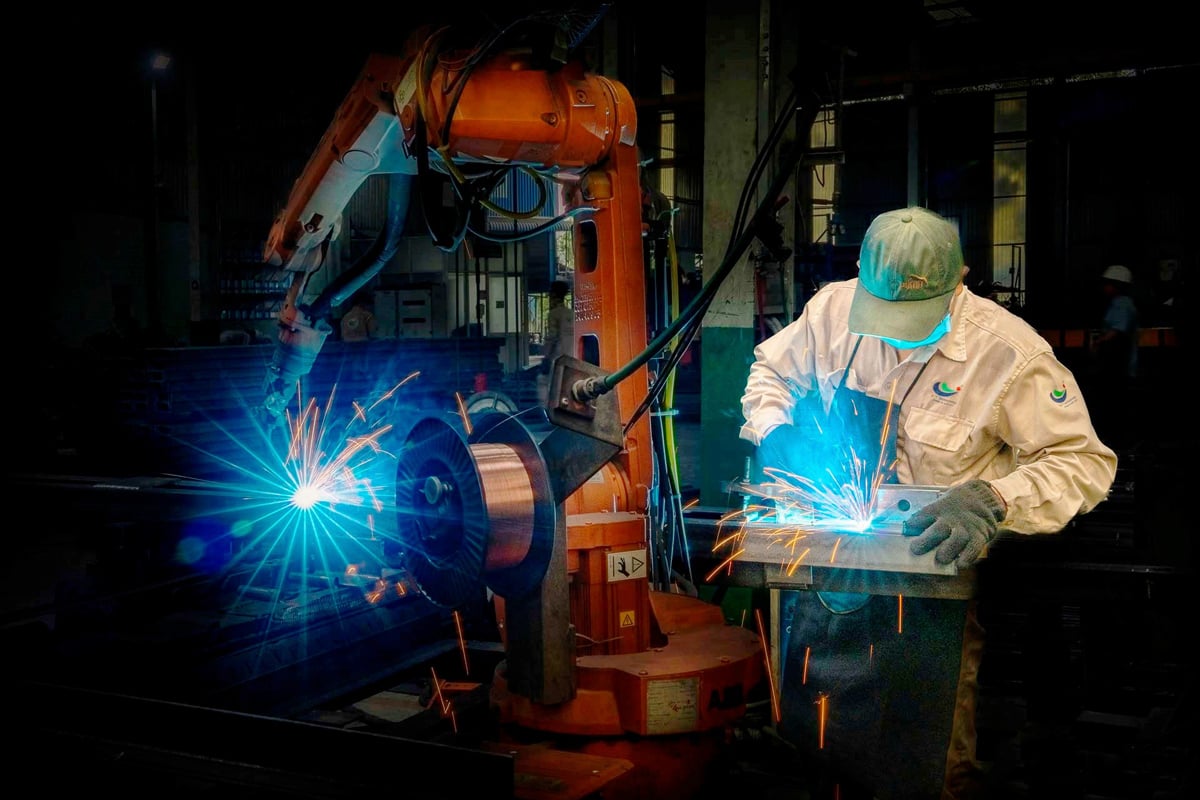
Workers' rights to work in the context of the Fourth Industrial Revolution in Vietnam
The Fourth Industrial Revolution is profoundly changing all areas of economic and social life, including the labor market. In this context, workers' right to work is no longer exercised in the traditional space, but must adapt to new scientific and technological factors, such as automation, artificial intelligence and flexible working models.
Some opportunities
Thanks to the development of artificial intelligence and automation, steps in the production process are automated, creating high-quality products with superior features, meeting increasingly stringent market standards. This changes traditional work, creating great opportunities for businesses with little social capital, but with advantages in technical capital. At that time, businesses can make faster production decisions automatically or semi-automatically. Workers are gradually replaced by robots and production is carried out on modern production lines, under close supervision, according to strict processes. The Internet of Things, big data and remote working technology help connect devices and systems, optimize work processes, be flexible in working time and set out the implementation of workers' rights by businesses and workers in accordance with the context of the Fourth Industrial Revolution:
- Access to technology and technology skills training: Workers need to be guaranteed access to new technology and training content to improve their labor skills.
- Right to flexible work: In some fields, workers can work remotely, flexibly in location and time, but still have basic rights guaranteed.
- Right to privacy, personal secrets, family secrets : Information about the private life, personal secrets, family secrets of workers must be respected and protected.
- Equal access to employment: Workers must be guaranteed no discrimination on the basis of race, skin color, national or social origin, ethnicity, gender, age, maternity status, marital status, religion, belief, political opinion, disability, family responsibilities...
- Right to labor protection, working in conditions ensuring safety and labor hygiene: Workers are protected by labor protection, working in conditions ensuring safety and labor hygiene.
Ensuring workers' rights not only ensures basic policies for workers, but also helps businesses develop harmoniously, sustainably and stably.
Some challenges
The Fourth Industrial Revolution changes the structure of the traditional labor market, while workers are not ready for the change, which poses many risks to workers (workers who are working and those who are looking for work). Enterprises can cut down on human jobs and replace them with robots , artificial intelligence, and automation. Workers may be treated unequally in society between high-skilled and low-skilled workers. The labor structure in industries is changing, workers do not update their skills, and technology will not keep up with the change. This factor poses challenges to state management in a number of aspects as follows:
Firstly, the decline in labor in some industries. Abundant, cheap labor will no longer be a factor creating competitive advantages and attracting foreign investment. Tens of millions of Vietnamese people of working age who have not been trained will face the risk of not having the opportunity to do high-income jobs; cheap labor will be replaced by robots, artificial intelligence, etc., creating a digital gap between different labor groups, regions, and areas.
According to the International Labor Organization (ILO), more than two-thirds of the 9.2 million textile and footwear workers in Southeast Asia are threatened by the wave of automation as machines gradually replace humans. Of which, the ILO predicts that 74% of workers in the processing and manufacturing industry in Vietnam will be at high risk; 86% of workers in the textile and footwear industry in Vietnam will lose their jobs within the next 15 years (1) .
Second, the labor market is fragmented. Jobs that require skills, techniques, creativity, and decision-making are increasingly dominant over simple jobs. Most workers will have to change the work skills they have had throughout their lives to be able to move out of simple jobs. People with more social skills, creativity, and decision-making skills in a changing context will have a better chance of occupying high-income jobs.
In the Mekong Delta region, the trend of occupational change is taking place in the direction of reducing the proportion of workers in low-skilled sectors and increasing the proportion of workers in sectors requiring high professional qualifications. The level of occupational mobility in this region is much larger than in developed countries, where the occupational structure is relatively stable. The average occupational change rate of workers in France was 7.4% in the period 1982 - 2009 (7.4% of French workers are working in sectors and occupations other than those in their most recent occupational report). Research on labor and employment in European countries shows that on average, 3% of workers change their occupations each year.
The high rate of occupational status change shows the change in the structure of labor and employment, and also shows the instability of occupations in the context of scientific and technological development, environmental and climate change. Research in the Mekong Delta shows that the rate of occupational status change occurs most frequently in the group of workers and skilled workers, 33.1% of people working in this occupational group move to other occupational groups, of which 23.6% move to become employees or occupations with medium technical expertise, 6.4% move to become managers or high-level technical expertise and 3.2% go down to become freelance workers or farmers.
The highest rate of maintaining occupational status is in the group of leaders, managers, high-level technical professionals and the group of simple workers and farmers; 98.3% of people in the group of leaders, managers, high-level technical professionals maintain their occupational status, this rate is 94.6% in the group of simple workers and farmers, meaning that there is not much movement of workers out of the agricultural sector. This shows that the speed of economic restructuring towards industrialization is taking place relatively slowly, the application of science and technology in production is not large.
Third, changes in the way work is done. Currently, most jobs are performed in a series of transactions between employees and employers. With current technological advances, the use of mobile devices and widespread internet access make it easier for people to access jobs through digital platforms. Some jobs are specialized and employers will order personnel to perform specialized tasks without following traditional labor methods (such as delivery and ride-hailing). Thus, an employee can sign multiple labor contracts with multiple employers, but must ensure full implementation of the contracted contents .
The fact that workers can sign multiple labor contracts with multiple employers creates opportunities for jobs for dynamic, agile, skilled and decisive people. However, it also creates challenges in the enforcement of labor laws by competent agencies and the respect for workers' rights by employers. If workers lack legal knowledge and do not clearly understand their rights and obligations under the law, their rights may be violated by businesses (wage deductions, late payment of wages, etc.).

Some solutions to ensure workers' right to work in the context of the Fourth Industrial Revolution
To To proactively respond to and take advantage of opportunities brought about by the Fourth Industrial Revolution and ensure workers' right to work, a number of solutions need to be implemented:
Firstly, on institutional improvement . Institutional improvement needs to closely follow Resolution No. 52-NQ/TW, dated September 27, 2019, of the Politburo, “On a number of policies and guidelines to proactively participate in the Fourth Industrial Revolution”, especially Resolution No. 57-NQ/TW, dated December 22, 2024, “On breakthroughs in science, technology, innovation and national digital transformation ”, including the issuance of policies to limit the negative impacts of the Fourth Industrial Revolution. Creating a legal corridor for the implementation of new labor and employment models on the digital technology platform and perfecting social security policies in line with the Fourth Industrial Revolution, promptly handling challenges posed to social development…
Second, on state management of human resources. The quality of human resources and ensuring the right to work of workers are the top concerns of our Party and State. As a developing country with many difficulties, the Party and State of Vietnam always determine that ensuring the right to work for each citizen is both an urgent issue in the immediate future and a long-term strategic issue of the country. Documents of the 13th National Congress of Delegates Continue to emphasize the Party's consistent viewpoint and policy on the goal of creating sustainable, quality jobs, developing human resources (one of the three strategic breakthroughs) and supporting labor market development: Focus on improving the quality of human resources associated with rapid labor restructuring, especially in rural areas. Focus on retraining and regular training of the labor force, etc. Create an environment and conditions for the development of a synchronous, modern, flexible, unified, integrated labor market with management and regulation by the State. Focus on building and perfecting the labor market information system, improving the quality of forecasting to improve the efficiency of connecting labor supply and demand and the quality of employment services, etc.
Therefore, for state management agencies, to effectively transform from unskilled labor to skilled labor, certificates suitable for advanced technology, high technology, it is necessary to improve the quality of education and training, especially at the secondary level and improve the quality of vocational training institutions. This solution requires career orientation right from the secondary and high school levels so that students have appropriate choices, avoiding the situation of working in the wrong field of study after graduation, creating a waste of labor resources.
In order to train in the right direction and prepare well the training facilities in terms of materials, teachers and finance, forecasting training needs is also very necessary. Practice shows that to train a highly qualified worker or vocational training for a vocational worker requires at least 3-5 years, along with considerable effort and cost. Therefore, to avoid wasting resources, it is necessary to conduct early research to enhance the capacity to forecast training needs and organize vocational training quality assessment. It is necessary to conduct research to gradually form organizations with sufficient capacity to forecast and evaluate the capacity and training products of universities and vocational training facilities, ensuring that output standards on quality are linked to the labor market, adapting to the needs of labor force development in the conditions of the Fourth Industrial Revolution, serving as a basis for providing necessary and reliable information for training facilities to determine input enrollment targets according to labor market signals.
National human resource data plays an important role in monitoring, managing and controlling the quantity, quality and fluctuations of human resources. From there, the State has directions, solutions and actions to adjust labor resources, adjust the structure of industries and occupations of the country. This helps control and orient the development of the entire national economy. The national human resource database built in the context of the Fourth Industrial Revolution has great advantages when taking advantage of the application of big data. In which, integrating necessary information of a person of working age, grasping the needs, industries and occupations they have been trained in, jobs they have done and are doing... and being able to send them information about jobs from businesses that need to recruit in similar industries and occupations, creating a reliable online "job supermarket". That is “connecting qualified workers with suitable jobs”, “creating and providing information to arrange the right people for the right jobs”, “providing supporting services to facilitate labor participation and labor mobility” (2) . Currently, Decision No. 06/QD-TTg, dated January 6, 2022, of the Prime Minister “Approval of the Project on developing applications of population data, identification and electronic authentication to serve national digital transformation in the period 2022 - 2025, with a vision to 2030” is being implemented. Therefore , the labor database must be linked to the national population database.
Third, for workers . It is necessary to raise workers' understanding and awareness of the advantages and challenges of the Fourth Industrial Revolution and train them in the necessary knowledge and skills to meet job requirements in the new situation.
Currently, as the subject of the right to work, workers need to be proactively and actively prepared to adapt to changes and demands of the labor market and working environment in the Fourth Industrial Revolution. In other words, workers should proactively approach and perceive the Fourth Industrial Revolution as an opportunity rather than a challenge. First of all, it is extremely necessary to raise workers' understanding and awareness of the advantages and challenges of the Fourth Industrial Revolution and equip them with skills to cope with the impacts of this revolution. Such understanding and awareness can be said to be a practical tool; on the other hand, this is also the responsibility of workers as the subject of rights, helping them proactively receive achievements, as well as prevent or minimize the negative impacts of the Fourth Industrial Revolution.
To adapt to new technology and digitalization in the Fourth Industrial Revolution, meeting the requirements of the labor market, the training content for workers focuses on science, technology, engineering and mathematics (STEM); skills related to information technology such as programming, interdisciplinary skills, big data mining, information security, network security, skills and techniques for handling digital media; skills to use media appropriately and effectively; ability to process complex information and manage data...; knowledge of systems, processes, methods; soft skills of effective communication, active listening and critical thinking, creative perception and reasoning, problem solving...
In the context of information explosion and open social environment based on exchange and collaboration, workers need to improve their knowledge, skills and experience by self-studying and sharing information on social networking sites and technology platforms to gradually master new technologies and machines. However, it is necessary to receive information intelligently and selectively, avoiding cases of receiving negative and toxic information, knowledge and skills.
Fourth, for employers. In labor relations, employees and employers are two main entities, closely linked in terms of rights and obligations; the rights of one party will be the obligations of the other party and vice versa. Therefore, employers need to proactively and actively implement many solutions to ensure the right to work of employees. This includes improving the quality of human resources, creating a safe, healthy, fair working environment and complying with labor laws. At the same time, it is necessary to focus on training, retraining, and career conversion so that employees can adapt to changes in technology.
The implementation of the above solutions will help Vietnamese workers take advantage of opportunities and minimize challenges posed by the context. Thereby, ensuring workers’ right to work, creating a flexible, fair and sustainable labor market, building a modern, dynamic and effective working environment, meeting the requirements of the Fourth Industrial Revolution./.
----------------------------
(1) Nguyen Tuyen: After the pandemic: Which industries are most at risk of being replaced by robots?, Dan Tri Newspaper , October 19, 2021, https://dantri.com.vn/lao-dong-viec-lam/nganh-nghe-nao-co-nguy-co-bi-robot-thay-the-nhat-20211019122456801.htm
(2) World Bank Group: Vietnam's Future of Jobs: Harnessing Megatrends for Greater Prosperity, day October 31, 2018 , https://www.worldbank.org/vi/country/vietnam/publication/vietnam-future-jobs-leveraging-mega-trends-for-greater-prosperity
Source: https://tapchicongsan.org.vn/web/guest/van_hoa_xa_hoi/-/2018/1097102/bao-dam-quyen-lam-viec-cua-nguoi-lao-dong-trong-boi-canh-cuoc-cach-mang-cong-nghiep-lan-thu-tu-o-viet-nam.aspx







![[Photo] Candidates take the first graduation exam with the new Literature topic](https://vphoto.vietnam.vn/thumb/1200x675/vietnam/resource/IMAGE/2025/6/26/dfded9e317554c25a3e26defe672ebb7)
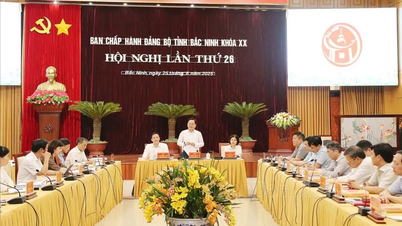







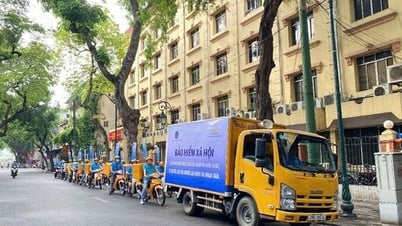


















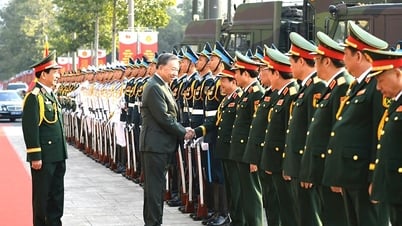

![[Photo] More than 1.1 million candidates nationwide enter the 2025 High School Graduation Exam](https://vphoto.vietnam.vn/thumb/1200x675/vietnam/resource/IMAGE/2025/6/26/9156d47f0f6e4268aa4a7dcdb05477f7)





























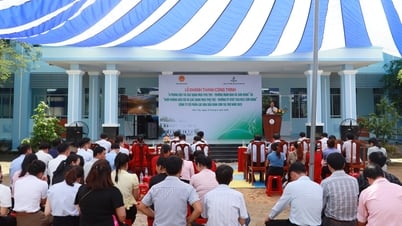



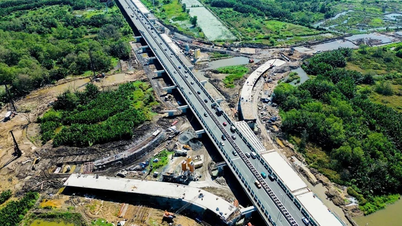















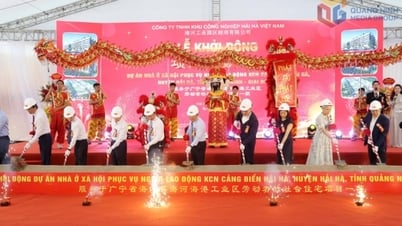


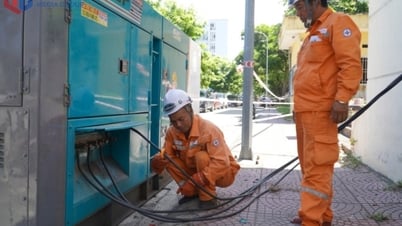

















Comment (0)